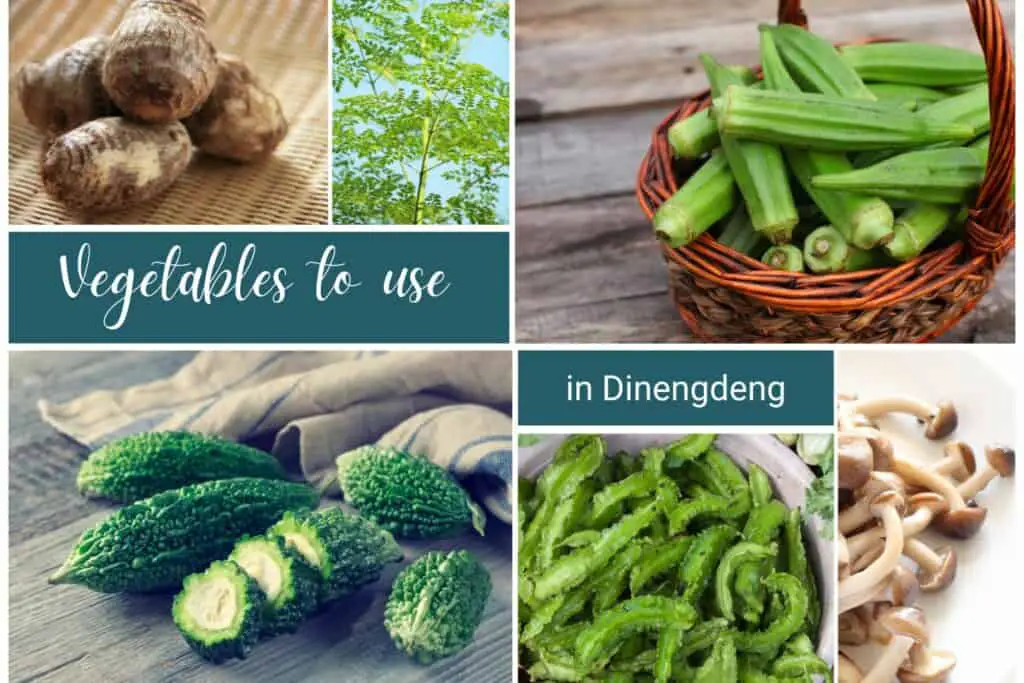
The awesome thing about dinengdeng, apart from it having a myraid of health benefits, is that you can make it by boiling any vegetable that you have available to you locally. That means there are many different variations to dinengdeng because of the many different types of vegetables you can use. In this article, we will talk about the different types of vegetables you can use to cook dinengdeng.
Moringa Fruit (Malunggay pods)

If you’ve never had moringa fruit before, you might be wondering what it tastes like. Malunggay pods have a unique, slightly sweet flavor and a when you open the pods, they have a jelly flesh that you can scrape off with a fork. Malunggay pods absorb flavor very well which makes them the perfect addition to dinengdeng.
Moringa fruit is an excellent source of vitamins and minerals. It is rich in Vitamin C, which is essential for boosting the immune system. It also contains Vitamin A, which is important for vision and healthy skin. In addition, moringa fruit is a good source of potassium, calcium, and iron. These minerals are essential for maintaining healthy bones and muscles. Furthermore, moringa fruit contains antioxidants, which can help to protect the body against disease. All in all, moringa fruit is an incredibly nutritious food that can provide a variety of health benefits.
Click here for my dinengdeng recipe using bunga ng malunggay (moringa fruit).
Bamboo shoots (Labong)
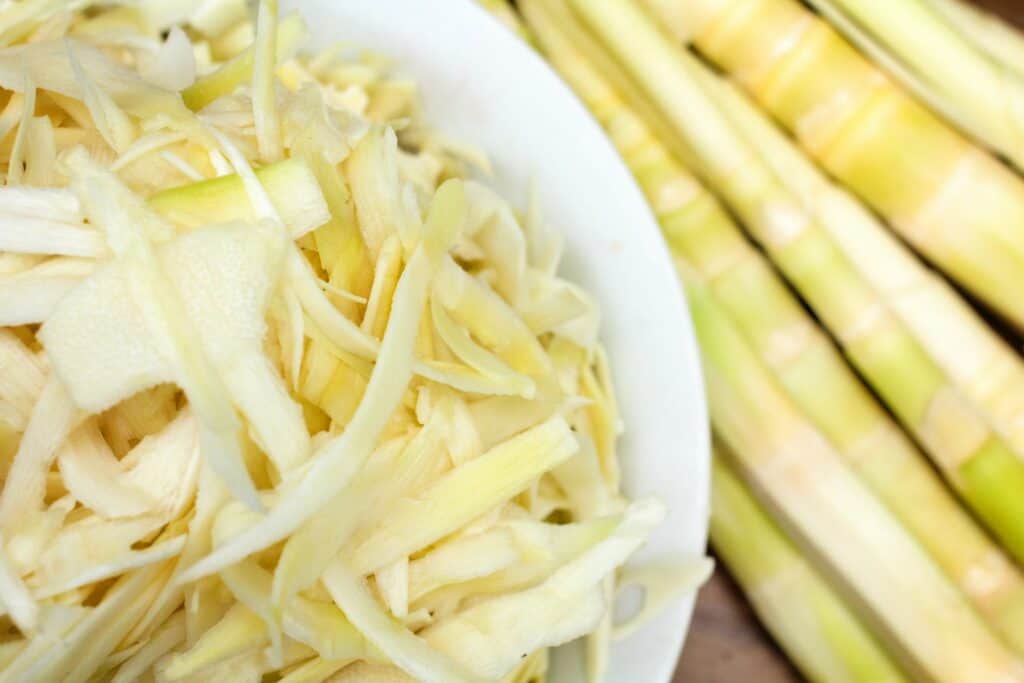
Bamboo shoots are a common ingredient in Asian cuisine, and they have a distinct flavor that is both slightly sweet and slightly nutty. When they are young and tender, they can be eaten raw or lightly cooked. However, as they age, they become tougher and more fibrous. As a result, older bamboo shoots are usually boiled or pressure-cooked before they are used in recipes. If you can’t find fresh bamboo shoots, you can also find them canned or jarred.
You may not think of bamboo as being particularly nutrient-rich, but it actually contains a variety of vitamins and minerals that can be beneficial to your health. For example, bamboo shoots are a good source of vitamin C, which is important for immunity and skin health. They also contain potassium, which helps to regulate blood pressure, and magnesium, which is essential for bone health. In addition, bamboo shoots are a good source of dietary fiber, which can help to keep your digestive system healthy and improve bowel regularity. So next time you’re looking for something to add to your stir-fry, consider reaching for some bamboo shoots. You may be surprised at how good they are for you!
Click here for my dinengdeng recipe using jute leaves and bamboo shoots.
Squash flowers
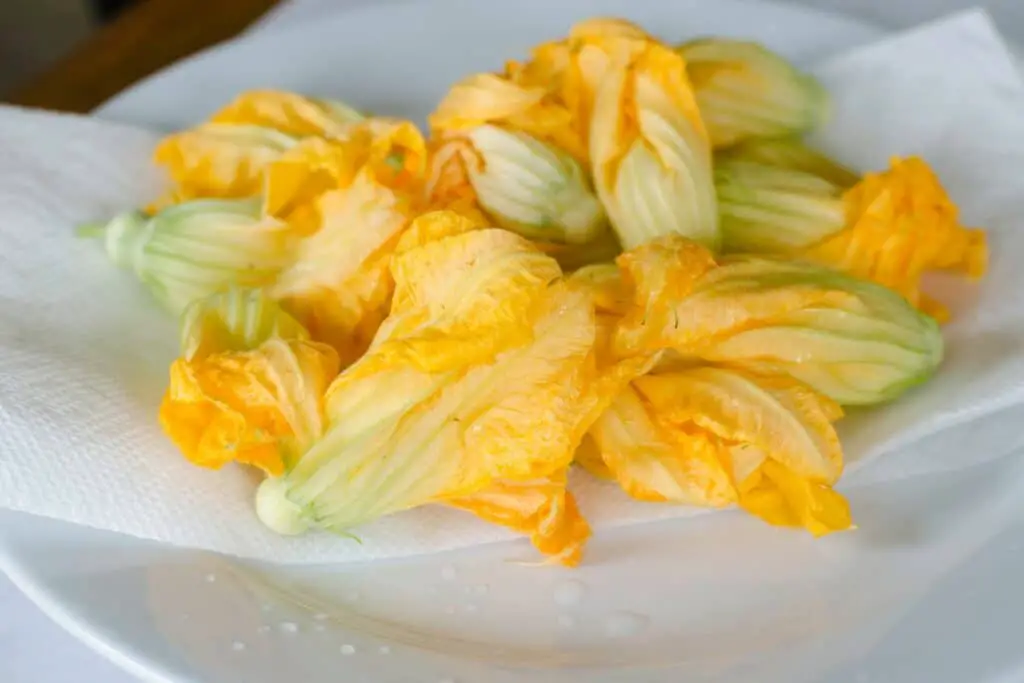
Squash flowers have a mild flavor and a slightly crunchy texture that makes them a popular choice for this dish. Although if I’m being honest with you, I hated eating these when I was younger because they just look itchy to me!
Squash flowers have a delicate, slightly sweet flavor that is often likened to that of zucchini. The petals are edible and can be enjoyed raw or cooked. When choosing squash flowers, look for those that are brightly colored and free of blemishes. If the flowers are wilted or bruised, they will not taste as good. When cooking squash flowers, it is important to handle them gently so as not to damage the petals. For best results, use them as soon as possible after picking.
Squash flowers are a nutritional powerhouse, packed full of vitamins, minerals, and antioxidants. They’re an excellent source of Vitamin C, providing over 20% of the recommended daily value in just one cup. They’re also a good source of Vitamin A, manganese, and fiber. The carotenoids in squash flowers have been shown to have anti-inflammatory and anticancer properties. In addition, the lutein and zeaxanthin in squash flowers help to protect against age-related macular degeneration. So not only are squash flowers delicious, they’re also good for you!
String Beans
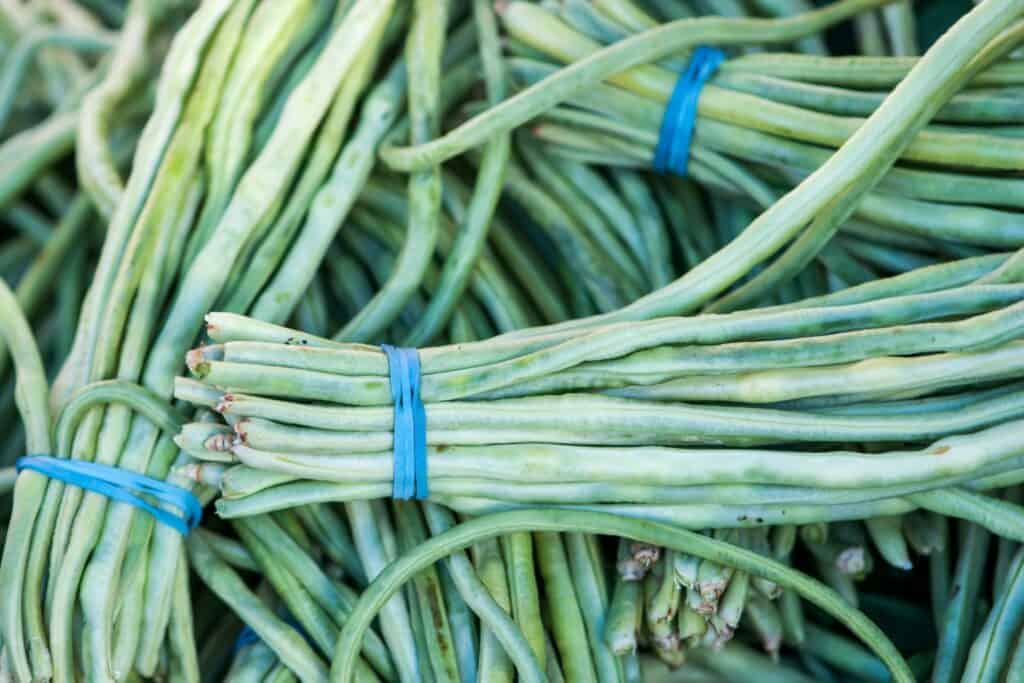
I love string beans! They have a really fresh, crisp taste that is sort of like a cross between a green bean and a snap pea. They’re also really versatile – you can steam them, saute them, or even eat them raw. I like to add them to dinengdeng for some extra crunch.
String beans are a nutritional powerhouse. They’re an excellent source of vitamins A, C, and K, as well as folate and manganese. String beans are also a good source of dietary fiber, protein, thiamin, copper, phosphorus, and potassium. In addition to being packed with nutrients, string beans are also low in calories and fat. This makes them a great addition to any healthy diet. So if you’re looking for a healthy and delicious way to get your nutrient fix, look no further than string beans.
Click here for my dinengdeng recipe using string beans and squash.
Winged Beans
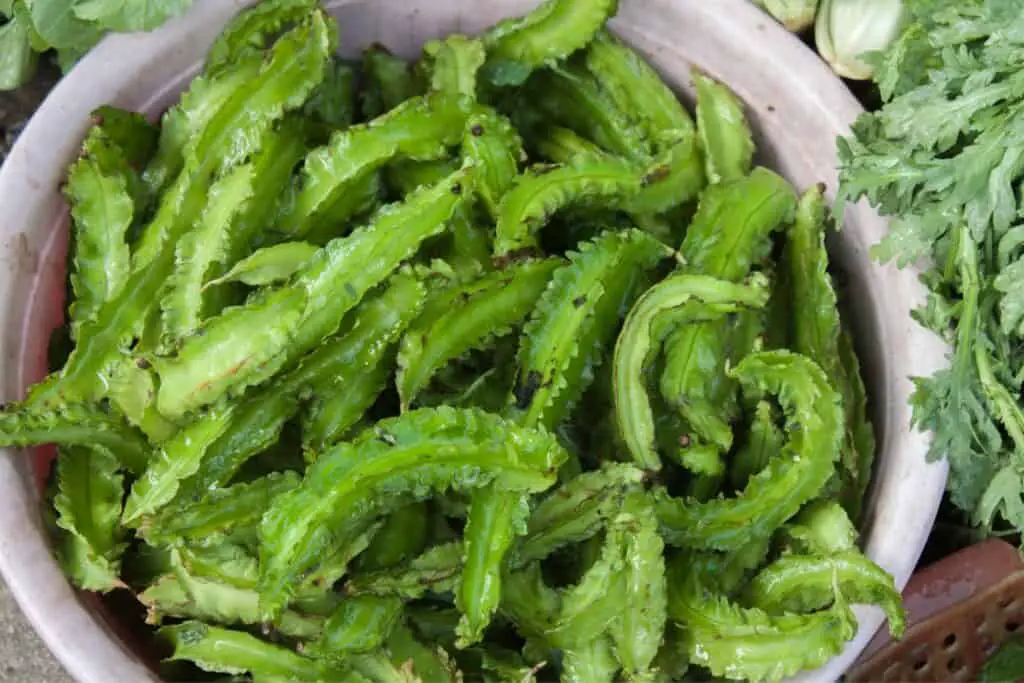
If you’ve never had winged beans before, you might be wondering what they taste like. These unusual beans have a nutty flavor that is similar to peanuts. They are also fairly crunchy, making them a great addition to dinengdeng. Winged beans are also a good source of protein, so they make a healthy and filling snack. If you’re looking for something new to try, winged beans are definitely worth a try!
Winged beans are a type of legume that is native to tropical regions of Asia, Africa, and South America. They are a good source of protein, fiber, vitamins, and minerals. The beans are typically green in color and have a slightly nutty flavor. In addition to being eaten fresh, they can also be cooked and used in soups, stews, and curries. Winged beans are an excellent source of many nutrients and vitamins. For instance, they are a good source of vitamin C, which is important for immunity and general health. They are also a good source of iron, which is necessary for red blood cell production. Additionally, winged beans contain several essential minerals, including potassium, magnesium, and phosphorus. All of these nutrients work together to keep the body healthy and functioning properly.
Amaranth
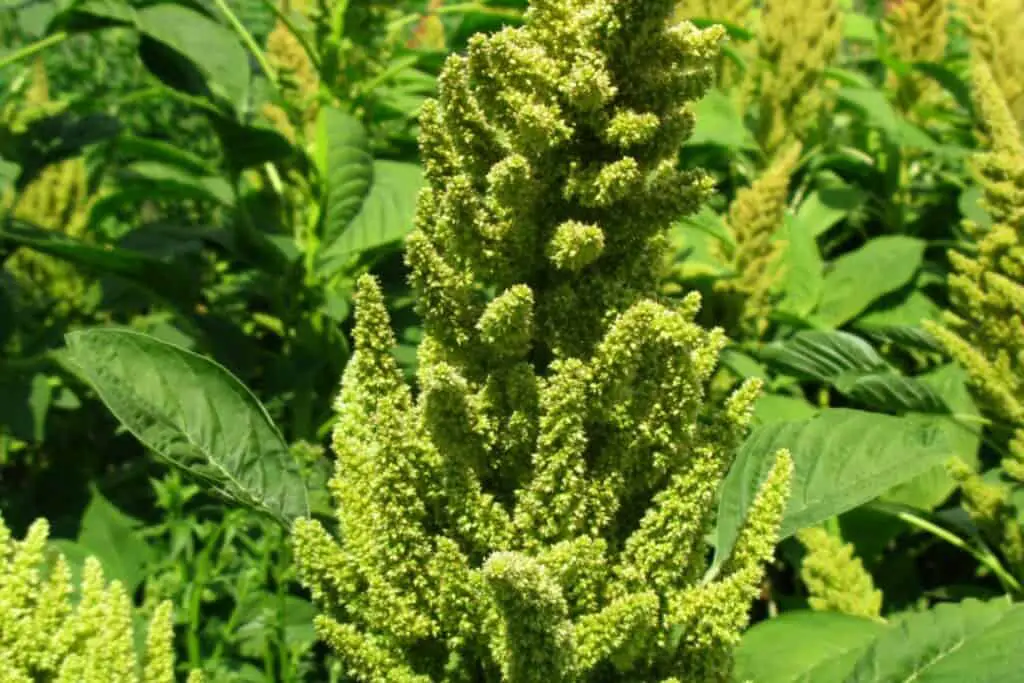
Many people are curious about amaranth, especially since it is becoming more popular as a health food. So, what does amaranth actually taste like? In general, amaranth has a slightly sweet and nutty flavor.
Among the many nutrient-rich grains, amaranth stands out as a veritable powerhouse of nutrients. This grain is especially high in iron and calcium, making it an excellent choice for those who are looking to boost their intake of these essential minerals. In addition, amaranth is also a good source of vitamins A and C, as well as dietary fiber. Because of its nutrient content, amaranth has been shown to offer a number of health benefits, including improved blood circulation and decreased risk of certain chronic diseases. So, if you’re looking for a nutrient-rich grain to add to your diet, amaranth is definitely worth considering.
Eggplant
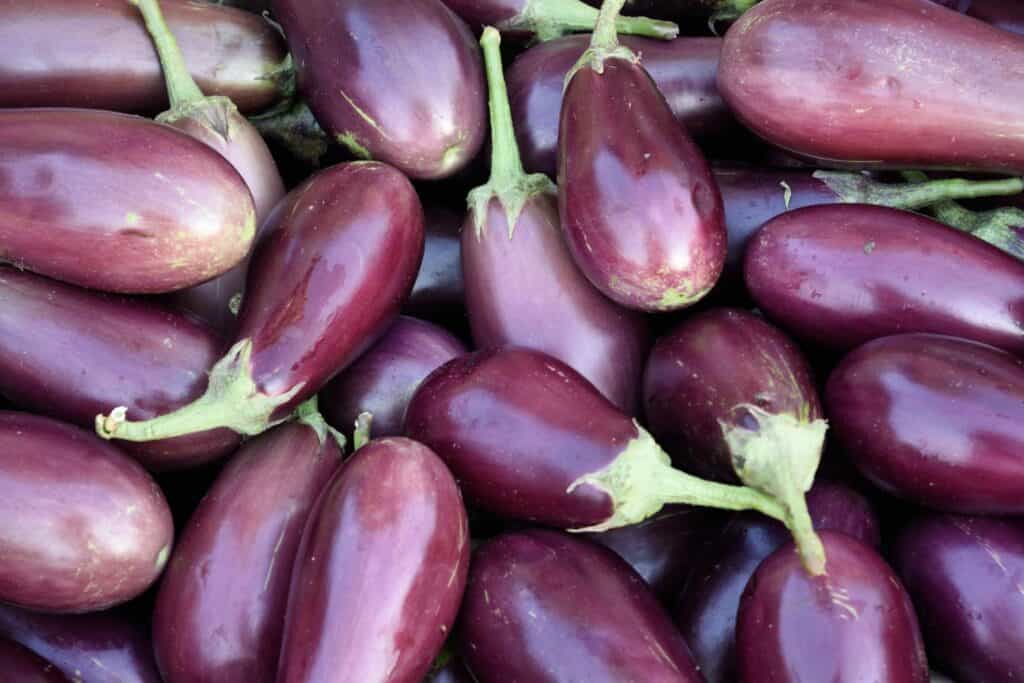
Eggplant is a versatile vegetable that can be used in a variety of dishes. It has a slightly sweet taste, and its flesh is smooth and creamy. Eggplant can be roasted, grilled, baked, or sauteed, and it pairs well with both sweet and savory flavors. When cooked, eggplant absorbs the flavors of other ingredients, making it a great choice for both simple and complex recipes.
Eggplants are a nutrient-dense food, meaning they are low in calories but high in vitamins, minerals, and other important nutrients. Eggplants are an excellent source of fiber, vitamins C and K, and manganese. They also contain small amounts of other nutrients, such as thiamin, niacin, vitamin B6, folate, phosphorus, copper, and magnesium. In addition to being a good source of nutrients, eggplants also contain compounds that may have health benefits. For example, eggplants contain antioxidants that can help protect cells from damage. They also contain compounds that may help to reduce inflammation.
Okra
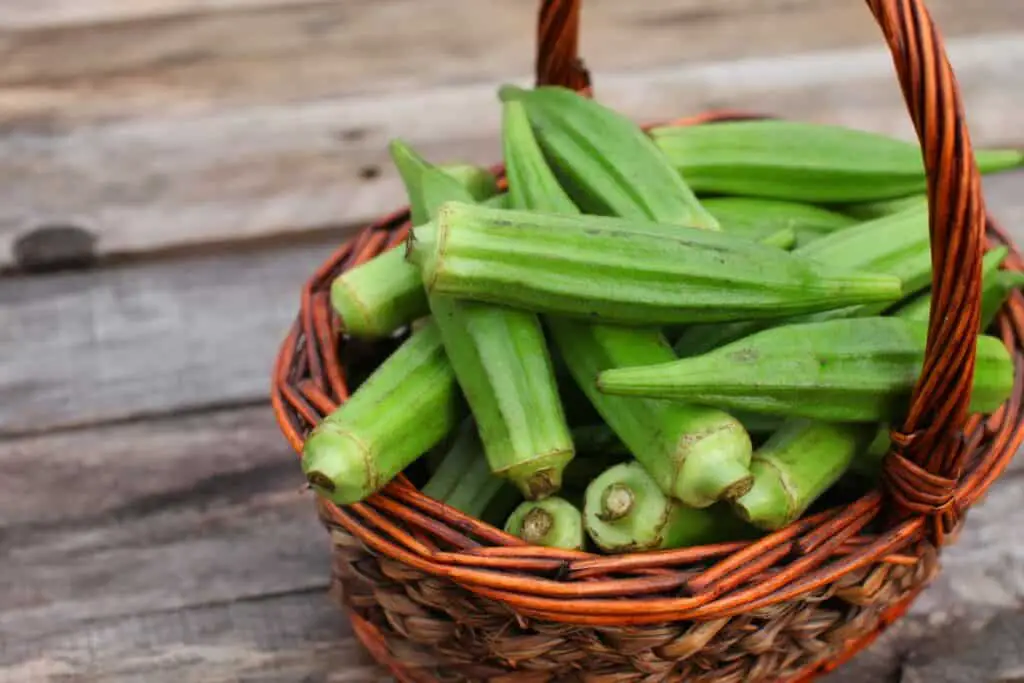
Many people are curious about what okra tastes like. The answer is that it depends on how it is prepared. Okra can have a slightly mucilaginous texture, which some people find off-putting. Okra is often cooked, at which point its flavor takes on the characteristics of whatever it is cooked with. For example, if okra is boiled with tomatoes and onions, it will take on the taste of those ingredients. In general, okra is a versatile ingredient that can be used in a variety of dishes. With its subtle flavor and unique texture, it is an excellent addition to soups, stews, and curries.
Did you know that okra is not only deliciously nutritious, but it’s also packed full of vitamins and minerals? Here’s a rundown of some of the nutrients you’ll find in this superfood:
Fiber: Okra is a great source of both soluble and insoluble fiber. Soluble fiber helps to regulate blood sugar levels, while insoluble fiber promotes regularity and helps to prevent constipation.
Vitamins: Okra is an excellent source of vitamins A, C, and K. Vitamin A is essential for eye health, while vitamin C boosts immunity and helps to heal wounds. Vitamin K is important for bone health.
Minerals: Okra is also a good source of magnesium, potassium, and calcium. Magnesium helps to relax muscles, potassium promotes heart health, and calcium is essential for strong bones. So next time you’re looking for a nutritious snack, reach for some okra!
Bitter Melon

Bitter melon is, well, quite bitter. It’s used in a lot of Asian cuisine, and it’s definitely an acquired taste. The bitterness comes from compounds called cucurbitacins, which are also found in other bitter vegetables like radishes and turnips. When cooked, bitter melon can take on a variety of flavors depending on how it’s prepared. For example, it might be stir-fried with sweet spices like cloves and cinnamon, or it could be simmered in a broth with other savory ingredients, like in dinengdeng. Regardless of the dish, bitter melon is definitely an acquired taste that not everyone enjoys. However, if you’re looking for a new culinary adventure, it’s definitely worth giving bitter melon a try.
Bitter melon, also known as ampalaya, is a fruit that looks like a cucumber with rough, warty skin. It is native to tropical regions of Asia and Africa and has been used for centuries in traditional Chinese medicine. Bitter melon is low in calories but high in nutrients, vitamins, and minerals. It is a good source of fiber, vitamins C and B6, potassium, and iron. It also contains flavonoids and carotenoids, which are antioxidants that can help protect cells from damage. In addition, bitter melon has been shown to have anti-inflammatory, anti-diabetic, and anti-cancer properties. While more research is needed to confirm these health benefits, consuming bitter melon may help to improve overall health.
Squash

Squash is a type of vegetable that belongs to the gourd family, which also includes cucumbers, watermelons, and pumpkins. There are many different types of squash, but they all have a similar taste and texture. Squash is typically quite bland on its own, but it takes on the flavors of whatever it is cooked with. When paired with other ingredients, squash can be sweet, savory, or even spicy. In dinengdeng, it will add a creamy texture to this Ilocano vegetable soup.
Apart from bring a tasty, creamy vegetable, squash is a nutrient-rich vegetable that provides a wide variety of vitamins, minerals, and other health benefits. For example, squash is an excellent source of Vitamin A, which is essential for vision and immune function. It also contains Vitamin C, which helps to protect cells from damage and aids in wound healing. In addition, squash is a good source of dietary fiber, which can help to regulate digestion and prevent constipation. Additionally, squash provides a range of minerals, including potassium, which is essential for maintaining cardiovascular health.
Click here for my dinengdeng recipe using string beans and squash.
Mushrooms
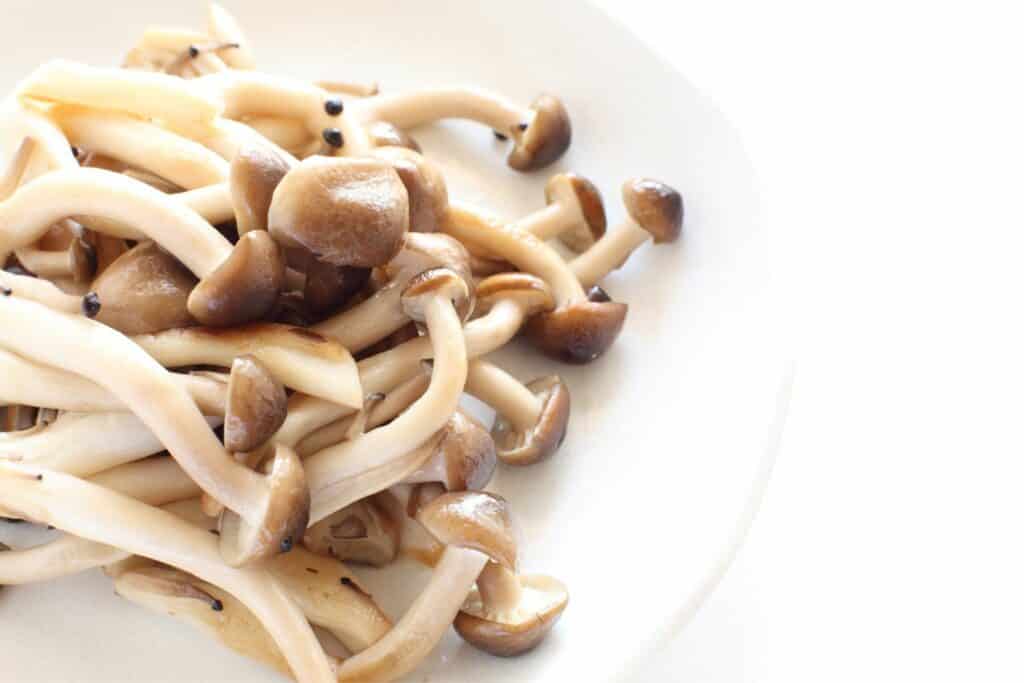
Mushrooms tend to have a earthy flavor that some people find very pleasant. They also have a bit of a meaty texture, which makes them a popular ingredient in vegetarian dishes. However, mushrooms can also be quite bland if they are not cooked properly. This is why it is important to use flavorful ingredients when cooking with mushrooms. Overall, mushrooms are a versatile ingredient that can be used in both sweet and savory dishes. With proper preparation, they can be a delicious addition to any meal.
Mushrooms are a type of fungi that are prized for their culinary and medicinal uses. Although they are often thought of as vegetables, mushrooms are actually more closely related to plants. Like plants, mushrooms absorb nutrients from the soil and convert them into food. As a result, they are a good source of vitamins, minerals, and other nutrients. For example, mushrooms contain high levels of Vitamin D, which is essential for bone health. They also contain selenium, a mineral that helps to boost the immune system. In addition, mushrooms are a good source of fiber and protein. As such, they make an excellent addition to any diet.
Taro (Gabi)
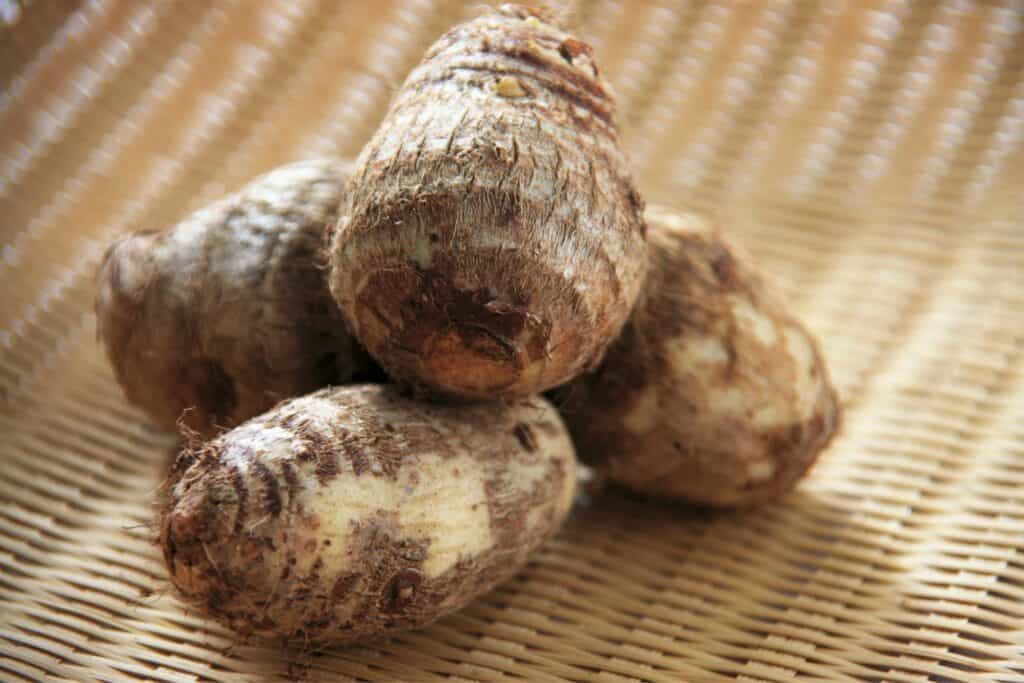
Taro is a root vegetable that is popular in many Asian cuisines. It has a starchy texture and a slightly sweet flavor. When cooked, it can be mashed or used in soups and stews. It is also sometimes served fried or roasted. Taro can be found fresh, frozen, or canned at most Asian markets.
Taro is a starchy vegetable that is high in carbohydrates and fiber, and it also contains a range of vitamins and minerals. For example, taro is a good source of vitamin C, which is essential for maintaining a healthy immune system. It also contains potassium, which helps to regulate blood pressure, and iron, which is necessary for producing red blood cells. In addition, taro contains antioxidants and phytochemicals that can help to protect against disease. Consequently, taro is not only a delicious vegetable, but it is also an excellent source of nutrients.
Saluyot

Saluyot, also known as jute mallow or Corchorus olitorius, is a leafy vegetable that is commonly used in Filipino cuisine. It has a slightly bitter taste and a mucilaginous texture, similar to okra. Saluyot can be eaten raw, cooked, or pickled, and is often used in soups and stews. The leaves are also a good source of vitamins A and C, as well as iron and calcium. In addition to its culinary uses, saluyot is also used medicinally in some cultures. It is believed to have anti-inflammatory properties and is sometimes used to treat respiratory conditions such as bronchitis.
Saluyot is rich in nutrients and vitamins, including vitamin A, vitamin C, iron, and calcium. This leafy vegetable also contains a high amount of fiber. Fiber is important for promoting digestive health and preventing constipation. Additionally, saluyot is often used as a remedy for sore throats and coughs. The calming properties of this herb can help to soothe irritated throats and reduce inflammation.
Click here for my dinengdeng recipe using jute leaves and bamboo shoots.
Malunggay
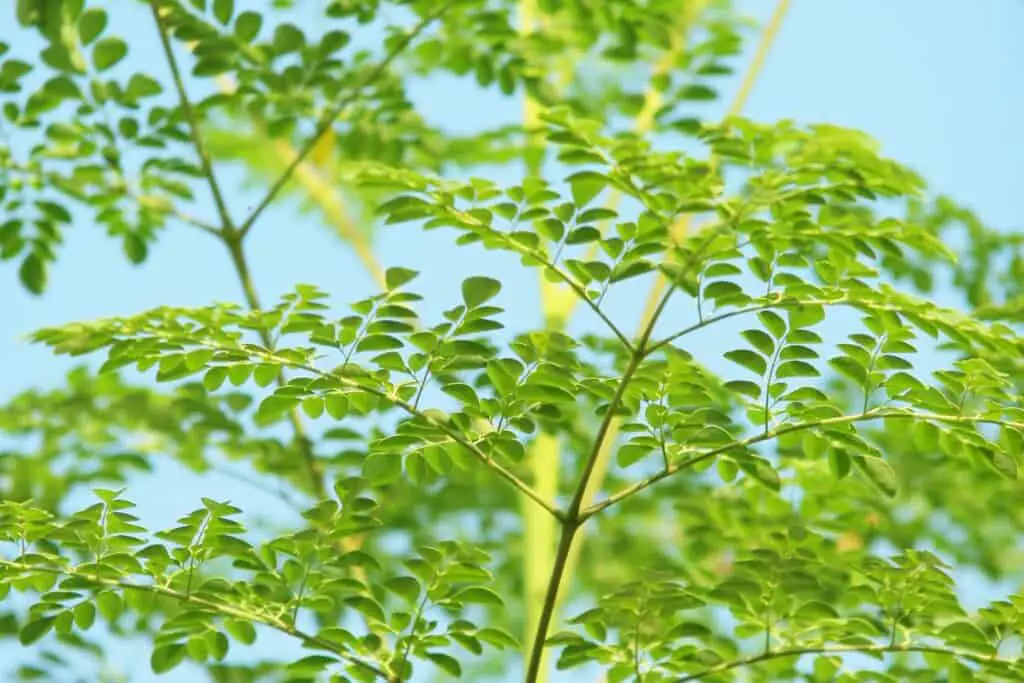
The leaves of the malunggay tree are often used in traditional medicine, and they are also eaten as a leafy green vegetable. In terms of taste, malunggay leaves are fairly bland. They have a slightly grassy flavor with a hint of bitterness. However, the leaves can be used in many different dishes, including dinengdeng. When cooked, the leaves will take on the flavors of the other ingredients in the dish.
Malunggay, also known as moringa, is a nutrient-rich plant that is native to the Philippines. The leaves of the malunggay plant are all edible and are often used in dinengdeng. In addition to being a delicious addition to many recipes, malunggay is also packed with nutrients. The leaves are a good source of vitamins A and C, as well as iron and calcium. The seeds contain high levels of protein and essential amino acids. And the flowers are rich in antioxidants. Whether you use it in your cooking or take it in supplement form, adding malunggay to your diet is a great way to get an extra boost of vitamins and minerals.
Spinach
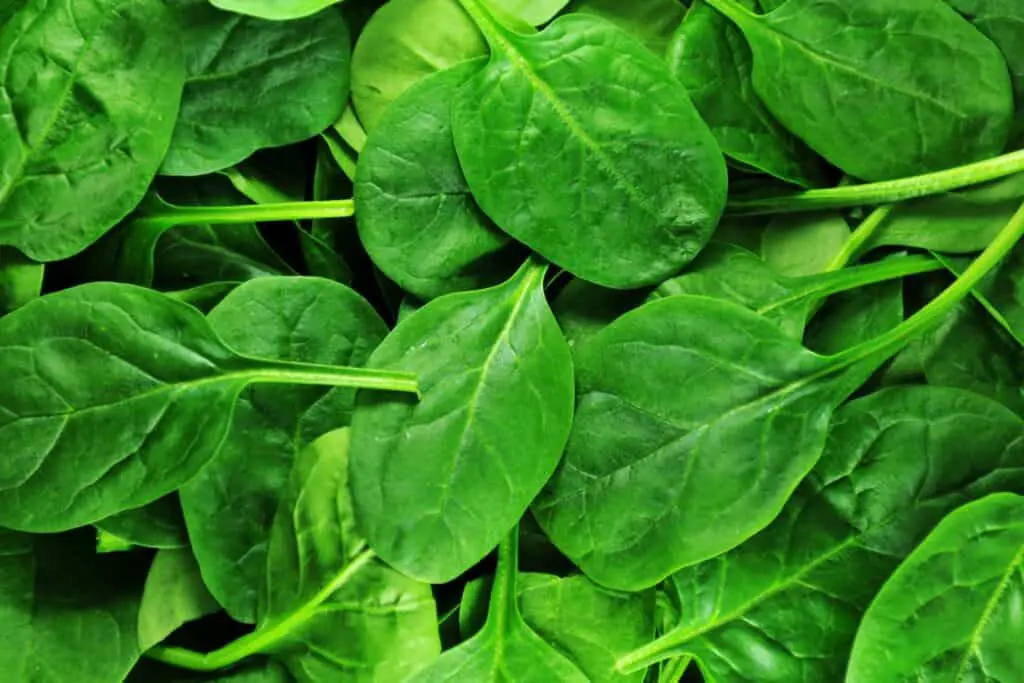
Some people say that spinach tastes like dirt. Others say that it has a slightly sweet taste, while others believe that it is bland and tasteless. The truth is, spinach can taste different depending on how it is prepared. For instance, if it is boiled or steamed, it will have a more mellow flavor. However, if it is eaten raw or sauteed, it will have a more peppery taste. Ultimately, the taste of spinach is unique and can vary depending on personal preference.
Most people know that spinach is a healthy food, but you might be surprised to learn just how many nutrients and vitamins it contains. For example, spinach is an excellent source of Vitamins A and C, as well as iron and folic acid. It’s also a good source of protein and fiber. All of these nutrients are essential for good health, which is why spinach is often touted as a “superfood.” So if you’re looking for a way to boost your health, add some spinach to your diet. You’ll be getting a wide range of nutrients that will help your body function at its best.
Curious about the history of dinengdeng? Click here to read all about it.
How about pinakbet? What’s the difference between pinakbet and dinengdeng? Click here to find out.

